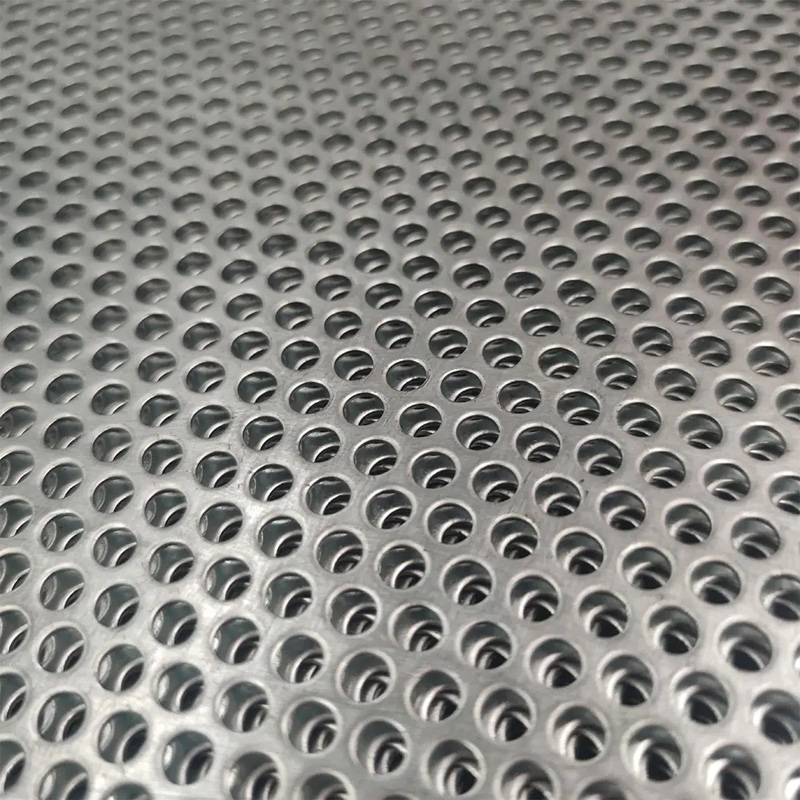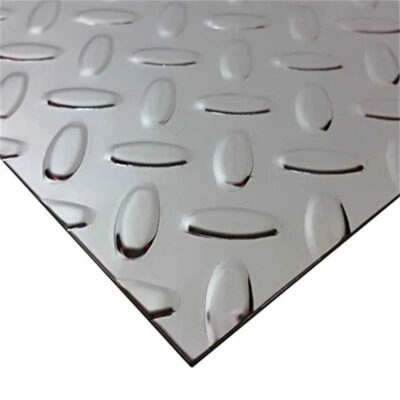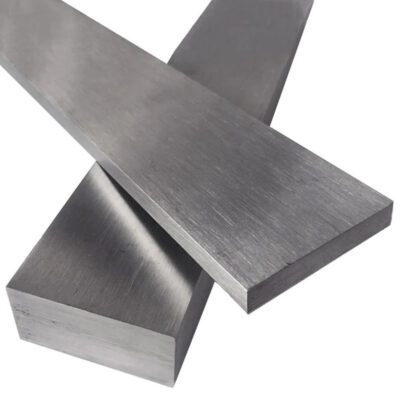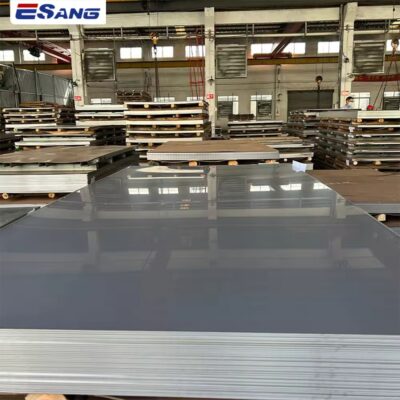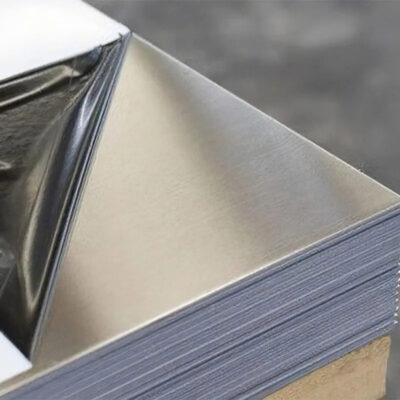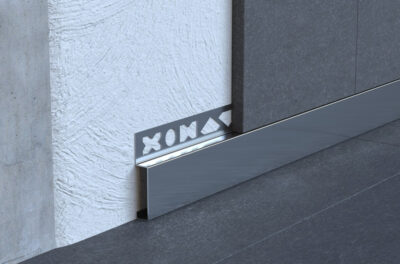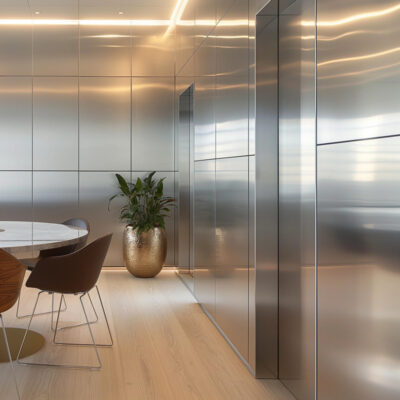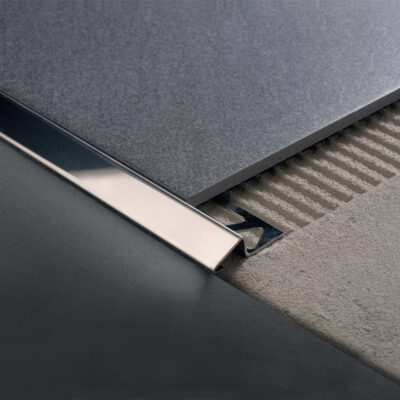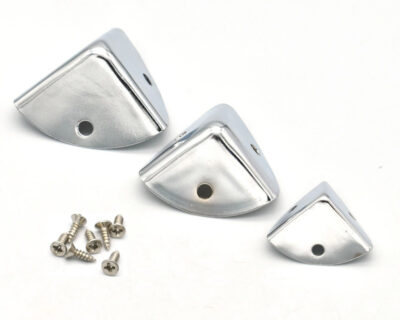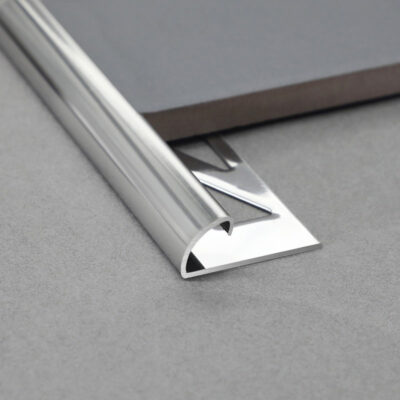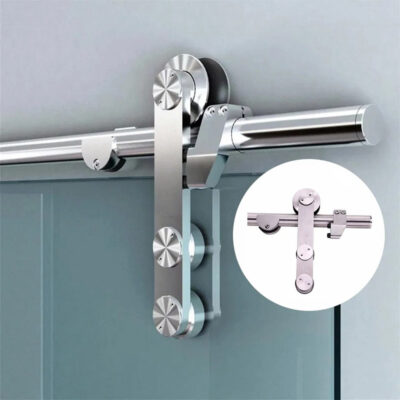Introduction to Perforated Stainless Steel Sheets
The first time I handled a sheet of perforated stainless steel, I was struck by its contradictory nature—simultaneously substantial yet lightweight, solid yet breathable. This duality makes perforated stainless steel sheets one of the most versatile materials in modern manufacturing and construction. These engineered products consist of metal sheets punctuated with precisely arranged holes or slots, creating materials that maintain structural integrity while offering functionality impossible with solid sheets.
Perforated stainless steel sheets have evolved considerably since their early industrial applications. What began primarily as filtration screens in mining operations during the late 19th century has transformed into a sophisticated material employed across dozens of industries. The development of computer-controlled perforation technology in the 1970s marked a turning point, enabling unprecedented precision and complex patterns that were previously impossible to achieve consistently.
Today’s market offers an astonishing variety of perforated stainless steel products created by manufacturers like E-Sang, who specialize in custom metal fabrication. The versatility comes not only from the perforation patterns themselves but also from the inherent properties of stainless steel—corrosion resistance, temperature tolerance, and hygienic qualities that make it ideal for applications ranging from industrial processing to architectural façades.
What distinguishes modern perforated sheets is the careful engineering behind them. Each perforation pattern creates specific performance characteristics—affecting everything from acoustic properties to structural integrity. This isn’t simply metal with holes; it’s a carefully calibrated material where the spaces are as functionally important as the metal itself.
Manufacturing Processes and Material Selection
The creation of perforated stainless steel sheets begins with selecting the appropriate grade of stainless steel. The most commonly used grades include 304 (containing approximately 18% chromium and 8% nickel) and 316 (with added molybdenum for enhanced corrosion resistance). The grade selection dramatically impacts the final product’s performance characteristics, particularly in challenging environments.
During a recent tour of a metal fabrication facility, I observed firsthand how raw stainless steel coils are transformed into perforated sheets. The process was both more precise and more flexible than I had imagined. The manufacturing manager explained that while traditional die-and-punch perforation remains the most economical method for large production runs, newer technologies have expanded their capabilities significantly.
The primary perforation methods include:
Die and punch perforation – Mechanical presses using custom-designed tooling that simultaneously punches multiple holes. This method remains the gold standard for high-volume production, though tooling costs can be substantial.
Laser cutting – Computer-guided laser beams that melt or vaporize metal to create holes. While initially slower than traditional methods, newer high-powered fiber lasers have dramatically improved production rates and can create complex patterns impossible with mechanical punching.
Water jet cutting – Ultra-high-pressure water streams, often mixed with abrasive materials, that cut through metal without heat distortion. This method excels at creating intricate patterns in thicker gauge materials.
CNC perforation – Computer numeric controlled punching that allows for varying hole patterns within a single sheet, enabling gradient designs and multiple pattern zones.
The quality control process is particularly rigorous for perforated stainless steel. Manufacturers typically inspect for dimensional accuracy using both automated vision systems and manual verification. Dr. Elaine Minster, a metallurgical engineer I consulted, noted that “tolerance stacking can be particularly challenging with perforated products—even minor deviations in hole placement can compound across a sheet, creating alignment issues in the final application.”
Sheet thickness typically ranges from thin 0.5mm (0.02″) for decorative applications to substantial 6mm (0.25″) or thicker for structural uses. The relationship between material thickness and hole diameter is critical—generally, the material should be at least half the diameter of the perforation to maintain structural integrity during the manufacturing process.
Design Specifications and Customization Options
The design possibilities with perforated stainless steel sheets extend far beyond simple round holes in regular arrangements. Today’s manufacturing capabilities allow for an extensive range of patterns and configurations that can be tailored to specific functional and aesthetic requirements.
Common perforation patterns include:
| Pattern Type | Description | Typical Applications | Visual Characteristic |
|---|---|---|---|
| Round | Most common, holes arranged in straight or staggered rows | General purpose, filtration, ventilation | Clean, uniform appearance |
| Square/Rectangular | Angular perforations, typically in aligned rows | Architectural screens, heavy-duty strainers | More open area per perforation than round |
| Slotted | Elongated openings in various arrangements | Filtration with directional flow requirements | Creates visual movement, often used in acoustics |
| Hexagonal | Six-sided perforations in honeycomb pattern | High strength-to-weight applications | Biomimetic appearance, structural efficiency |
| Decorative | Custom designs including logos, text, or images | Architectural features, branded elements | Unique visual impact, often with varying hole sizes |
The concept of “open area percentage” is fundamental when specifying perforated stainless steel. This measurement—the ratio of perforated space to the total sheet area—typically ranges from 10% to 70% and directly affects properties like air/liquid flow, light transmission, and structural strength. A fabrication specialist I interviewed emphasized that “finding the sweet spot between open area and structural requirements is often the key challenge in perforation design.”
When working with a recent soundproofing project, we discovered that varying the hole size across the panel could create targeted acoustic performance at specific frequencies—something impossible with uniform perforation. This gradient perforation approach has opened new possibilities in architectural acoustics.
Edge treatments represent another important customization option. While some applications can utilize raw-edge sheets, many require specific edge finishing:
- Deburred edges: Basic removal of sharp burrs created during perforation
- Flattened edges: Non-perforated margins that facilitate mounting
- Rolled edges: Curved edges that eliminate sharpness and add structural rigidity
- Custom framing: Integrated frame elements for specific installation methods
Surface finishing adds yet another dimension of customization. Beyond the standard mill finish, manufacturers offer options including brushed, polished, bead-blasted, and electropolished surfaces. The choice significantly impacts both appearance and performance characteristics like ease of cleaning and reflectivity.
Mechanical and Physical Properties
Understanding the mechanical properties of perforated stainless steel sheets is essential for appropriate application. These properties differ significantly from solid sheets of the same gauge and material due to the introduction of perforations.
The strength-to-weight ratio represents one of the most compelling advantages of perforated stainless steel. By removing material through perforation, weight reductions of 10-70% are achievable while maintaining surprising structural integrity. However, this relationship isn’t linear—the pattern, hole size, and arrangement dramatically impact strength characteristics.
During materials testing I observed last year, 304 stainless steel sheets with 40% open area (using 3mm round holes in staggered pattern) retained approximately 50-60% of the tensile strength of solid sheets of identical thickness. This performance exceeded theoretical calculations, demonstrating how the distribution of stress across the perforation pattern creates unexpected mechanical advantages.
The physical and chemical properties show equally interesting behaviors:
| Property | Solid Stainless Steel | Perforated Stainless Steel | Key Considerations |
|---|---|---|---|
| Corrosion Resistance | Excellent across SS grades | Maintained in perforated areas | Edge conditions may need additional attention |
| Thermal Expansion | 17.3 × 10^-6 m/(m·K) for 304 SS | Similar coefficient but affects overall dimension differently | Must account for pattern distortion in high-temp applications |
| Heat Dissipation | Limited by solid surface | Enhanced by increased surface area | Can improve cooling in certain applications |
| Sound Absorption | Poor, tends to reflect sound | Can absorb 20-50% of sound energy depending on pattern | Pattern design critical for acoustic performance |
| Weight | 8.03 g/cm³ for 304 SS | Reduced proportionally to open area | Weight savings compound in large installations |
Dr. Renata Vega, a materials scientist specializing in perforated metals, points out an often overlooked characteristic: “The dynamic response of perforated sheets differs dramatically from solid material. They exhibit different resonant frequencies and damping characteristics that can be advantageous in applications subject to vibration.”
The corrosion resistance of stainless steel remains largely intact in perforated sheets, though attention must be paid to edge conditions where the perforation process may expose the material differently. Grade selection becomes especially important in corrosive environments—while 304 stainless may suffice for most applications, environments with chlorides (like coastal areas) or certain chemicals may necessitate upgrading to 316 or more specialized grades.
An interesting phenomenon I’ve observed is how perforated sheets handle impact forces. While the absolute strength is lower than solid material, the perforation pattern can actually distribute impact forces more effectively in certain configurations, preventing the catastrophic failure sometimes seen in solid sheets.
Applications Across Industries
The versatility of perforated stainless steel sheets has led to their adoption across an impressive range of industries, each leveraging different aspects of this material’s unique properties.
In architectural applications, perforated stainless steel has become a signature material for contemporary facades. Beyond aesthetic appeal, these installations serve multiple functional purposes. A recent project I visited in Singapore utilized perforated 316L stainless steel panels as rain screens that reduced solar heat gain by nearly 30% while maintaining natural light transmission and views from interior spaces.
The perforations create a dynamic interaction with light—during daylight hours, the building maintains a solid appearance from outside while allowing occupants clear views outward; at night, interior illumination transforms the facade into a luminous, semi-transparent skin. Architects particularly value the material’s ability to create visual depth and movement through moire patterns that shift as viewers change position.
Industrial filtration represents one of the oldest and most technically demanding applications. Here, precision is paramount—perforation size and pattern directly impact separation efficiency and throughput capacity. In chemical processing, perforated stainless steel outperforms alternative materials due to its resistance to process chemicals across a wide temperature range.
A process engineer at a pharmaceutical manufacturing facility explained their selection criteria: “We need materials that maintain absolute cleanliness while handling aggressive cleaning compounds. Perforated 316L provides the flow characteristics we need without introducing contamination risks or degrading over time.”
The food and beverage industry relies heavily on these materials for:
- Processing equipment (draining, separating, drying)
- Conveying systems that require product support with drainage
- Sterile environments where regular cleaning and sanitization are mandatory
- Steam and heat distribution systems
Sound attenuation applications have grown substantially as acoustic engineering has advanced. Perforated stainless steel, especially when backed with acoustic material, can achieve Noise Reduction Coefficients (NRC) between 0.65 and 0.95 across specific frequency ranges. Concert halls, recording studios, and transportation hubs increasingly specify these materials for their combination of acoustic performance, durability, and aesthetic appeal.
Transportation applications leverage the weight reduction advantages. In mass transit vehicles, perforated stainless steel provides necessary ventilation, speaker covers, and partition components while minimizing weight. Aircraft manufacturers similarly utilize the material for lightweight yet durable interior components that must meet stringent fire and safety standards.
In security applications, perforated stainless steel offers an ideal combination of visibility, ventilation, and barrier performance. Detention facilities, secure data centers, and restricted access areas utilize these materials for their ability to allow air flow and visual monitoring while maintaining physical security.
The sustainability aspects shouldn’t be overlooked. As a highly recyclable material with exceptional longevity, stainless steel aligns with green building principles. Its durability translates to reduced lifecycle costs despite higher initial investment compared to alternative materials.
Selection Criteria for Projects
Selecting the appropriate perforated stainless steel specification requires balancing multiple factors against project requirements and constraints. Having specified these materials for diverse applications, I’ve found the process involves both art and science—technical requirements must be met while considering practical limitations.
The primary selection criteria should include:
Functional requirements – What specific performance characteristics must the material deliver? This might include flow rate for filtration, open area percentage for ventilation, or specific light transmission values for architectural applications.
Environmental conditions – Will the material be exposed to corrosive elements, high temperatures, or mechanical stress? This determines which grade of stainless steel is appropriate.
Mechanical requirements – Will the sheet need to support loads or resist impact? This influences both material thickness and perforation pattern.
Aesthetic considerations – When visible, how will the material contribute to the overall design intent? Pattern, finish, and visual characteristics become critical factors.
Budget constraints – Higher-grade alloys and specialized patterns increase costs. Finding the balance between performance requirements and budget often requires creative compromise.
When calculating the appropriate specifications, several technical factors must be considered:
| Factor | Influence on Selection | Typical Specifications | Considerations |
|---|---|---|---|
| Material Thickness | Determines strength, weight, and cost | 0.5mm-6mm (0.02″-0.25″) | Thicker material increases cost exponentially |
| Hole Size | Affects filtration, airflow, visibility | 0.5mm-100mm (0.02″-4″) | Smaller holes typically require thinner material |
| Open Area | Determines flow characteristics and structural integrity | 10%-70% | Higher open area reduces strength |
| Pattern Type | Impacts strength, flow direction, and aesthetics | Round, square, slot, decorative | Some patterns are more costly to produce |
| Edge Treatment | Affects installation methods and safety | Raw, deburred, flattened margins | Can significantly impact fabrication costs |
A common mistake I’ve encountered is overspecifying material properties without considering manufacturing limitations. For instance, specifying extremely small perforations in thick material can be technically impossible to produce with standard methods. Similarly, requesting certain patterns with very high open area percentages may compromise structural integrity beyond acceptable limits.
Cost-effectiveness often comes from understanding where specifications can be relaxed without compromising essential performance. During a recent consultation for an architectural screen project, we were able to reduce material costs by approximately 22% by slightly adjusting the hole pattern while maintaining the required visual effect and structural performance.
When evaluating quotes from different suppliers, it’s important to ensure like-for-like comparison. Richard Estes, a procurement specialist I collaborated with, notes that “hidden costs often emerge in finishing details or material certifications that weren’t explicitly defined in initial specifications.”
Installation and Maintenance Best Practices
Proper installation and maintenance protocols significantly impact both the performance and longevity of perforated stainless steel installations. These considerations are often overlooked during the specification phase, yet they can dramatically affect project outcomes.
Handling perforated sheets requires more care than solid material. The reduced material cross-section makes them more susceptible to deformation if improperly handled. When I visited a major fabrication shop last year, the production manager demonstrated their standard practice of using wide support platforms during transport and emphasized that workers should never lift large sheets by grabbing the perforated area with concentrated force.
Installation methods vary significantly by application, but several principles apply universally:
Fastening considerations: When mechanical fasteners are used, distribute attachment points to prevent stress concentration. Too few attachment points can lead to material deformation under load or vibration. Conversely, excessive fastening can restrict normal thermal expansion, potentially causing buckling or warping over time.
Edge treatment compatibility: Installation methods must account for the specified edge condition. For example, framed edges require different attachment approaches than raw edges. During a recent acoustic panel installation, we discovered that the specified mounting system wasn’t compatible with the sheet’s edge treatment, requiring field modification that could have been avoided with proper planning.
Thermal expansion allowance: Stainless steel expands and contracts with temperature changes. For large installations, especially outdoors, failure to accommodate this movement can result in distortion or fastener failure. Slotted fastener holes or floating mount systems often provide the necessary flexibility.
Galvanic corrosion prevention: When perforated stainless steel contacts dissimilar metals, particularly in wet environments, galvanic corrosion can occur. This risk is mitigated using insulating materials at contact points or selecting compatible metals for fasteners and supporting structures.
Maintenance requirements depend on both the environment and application, but generally focus on preserving the material’s passive oxide layer that provides corrosion resistance:
Regular cleaning: For most applications, periodic cleaning with mild detergent and water is sufficient. The frequency depends on environmental conditions and appearance expectations. I’ve observed installations in coastal environments that require monthly cleaning to prevent salt accumulation, while identical materials in inland locations perform well with annual maintenance.
Avoiding inappropriate cleaners: Chloride-containing cleaners should never be used on stainless steel as they can compromise the passive layer. Similarly, abrasive cleaners or tools can damage the surface finish, potentially reducing corrosion resistance and changing appearance.
Inspection protocols: Regular inspection for signs of surface contamination, particularly ferrous (iron-containing) particles that can cause localized rusting, helps prevent long-term damage. This is especially important in industrial environments where iron particles may be present in the air.
Documentation: Maintaining records of cleaning products used and maintenance performed helps identify potential causes if surface issues develop. Several facility managers I’ve worked with have implemented QR-coded asset tags that link to maintenance histories for each installation.
For architectural applications, protecting perforated stainless steel during construction phases is critical. Contact with concrete splatter, mortar, or certain construction adhesives can permanently damage the surface. Temporary protective films or coverings are recommended but should not remain in place longer than necessary, as adhesive residue can become difficult to remove over time.
Innovations and Future Trends
The technological landscape for perforated stainless steel continues to evolve rapidly, with several emerging trends poised to expand capabilities and applications in coming years. Having recently attended the International Metal Fabrication Expo, I was struck by how digital manufacturing technologies are transforming this seemingly traditional material.
Advanced manufacturing technologies are enabling unprecedented complexity in perforation designs. Multi-axis laser systems now create perforations at angles other than perpendicular to the sheet surface—producing fascinating optical effects and functional advantages for specific applications like directional airflow or controlled light transmission. These systems allow for perforation patterns that vary gradually across a sheet, creating visual depth and zoned performance characteristics impossible with conventional manufacturing.
Computational design is perhaps the most transformative trend. Rather than selecting from standard patterns, designers now use parametric modeling and algorithmic design tools to create perforation schemes optimized for specific performance criteria. Aaron Levinson, an architectural technologist specializing in computational fabrication, explained: “We’re now designing perforation patterns that precisely control factors like acoustics, thermal performance, and structural characteristics simultaneously, with the pattern responding mathematically to multiple variables.”
This approach has led to spectacular results in recent projects—like a concert hall ceiling where the perforation pattern was algorithmically designed to provide specific acoustic performance that varies across the surface, creating optimized sound reflection and absorption zones tailored to the exact dimensions and acoustic requirements of the space.
Sustainable manufacturing practices are gaining prominence as well. Traditional perforation methods produce significant material waste from the punched-out portions. Newer approaches include:
- Zero-waste cutting technologies that use extracted material for other components
- Energy-efficient laser systems that reduce carbon footprint
- Closed-loop material recovery systems for manufacturing byproducts
The market is seeing increased demand for multi-functional perforated systems that address multiple performance requirements simultaneously. For instance, architectural facades that combine:
- Rainscreen functionality
- Solar shading calibrated to seasonal sun angles
- Integrated photovoltaic elements
- Programmable LED illumination
- Self-cleaning nanotechnology surface treatments
From a materials science perspective, new stainless steel alloys are being developed specifically for perforated applications, with optimized work-hardening characteristics that maintain strength after perforation. These specialized alloys show particular promise in structural applications where traditional perforated materials might have been considered too weak.
Smart manufacturing is bringing previously impossible quality control standards to perforated products. Real-time vision systems now verify each perforation against design specifications, ensuring unprecedented accuracy and consistency. This enables tighter tolerances and more reliable performance in critical applications like pharmaceutical processing or aerospace components.
Looking forward, the integration of perforated stainless steel with other materials and systems represents the frontier of innovation. Hybrid systems combining perforated metals with transparent polymers, ceramic components, or composite materials are creating previously impossible combinations of properties.
Despite steel being one of humanity’s oldest engineered materials, perforated stainless steel continues to evolve in ways that expand its application potential. The intersection of traditional metallurgy with digital design and advanced manufacturing is opening new possibilities that will likely keep this venerable material at the forefront of industrial and architectural materials for decades to come.
Conclusion: Making Informed Decisions
Selecting and implementing perforated stainless steel solutions requires balancing technical requirements, aesthetic considerations, practical limitations, and economic factors. The material’s remarkable versatility creates opportunities across countless applications, but also demands thoughtful specification to achieve optimal results.
Throughout my work with these materials, I’ve found that successful projects typically involve collaboration between designers, engineers, fabricators, and installers—each contributing crucial perspective to the process. The most common difficulties arise when specifications are developed without considering the entire lifecycle from manufacturing through installation and maintenance.
While perforated stainless steel typically represents a higher initial investment than alternative materials, its durability, low maintenance requirements, and recyclability often make it the more economical choice when evaluated on a lifecycle basis. This is particularly true in demanding environments where replacement costs for less durable materials would be substantial.
For those new to working with these materials, I’d recommend starting with a thorough needs assessment focused on critical performance requirements, then consulting with fabrication specialists to explore options that meet those requirements efficiently. The knowledge gap between designers and manufacturers can be substantial—what seems like a minor specification detail to a designer might have significant manufacturing implications.
As perforated stainless steel continues to evolve through advances in manufacturing technology and computational design, the potential applications will undoubtedly expand. This evolution strengthens the case for viewing this not as a commodity material but as an engineered solution worthy of careful consideration and specification.
Frequently Asked Questions about Perforated Stainless Steel Sheets
Q: What are Perforated Stainless Steel Sheets, and how are they made?
A: Perforated Stainless Steel Sheets are made by punching or stamping holes into flat sheets of stainless steel. This process involves feeding a sheet of stainless steel into a punching press, where a die and punch create the desired hole pattern. The sheet can be cut, bent, or shaped further for various applications. The manufacturing process allows for customization in hole size, shape, and spacing, making these sheets highly versatile.
Q: What are the main applications of Perforated Stainless Steel Sheets?
A: Perforated Stainless Steel Sheets are used in a wide range of applications, including architectural facades, filters, ventilation systems, and medical equipment. They are also popular in interior and exterior design due to their aesthetic appeal and corrosion resistance. Other uses include displays, fixtures, furniture, and security screens. The sheets’ ability to allow airflow, light, and sound to pass through while maintaining structural integrity makes them ideal for diverse projects.
Q: What types of hole patterns are available in Perforated Stainless Steel Sheets?
A: The hole patterns in Perforated Stainless Steel Sheets can vary greatly, including round, square, oval, triangular, diamond, hexagonal, slot, and star-shaped holes. These different patterns allow for customized designs that meet specific functional or aesthetic needs. For instance, square hole patterns provide a clean, modern look and a high open area, making them suitable for applications requiring good ventilation or acoustic properties.
Q: What are the advantages of using Perforated Stainless Steel Sheets over other materials?
A: Perforated Stainless Steel Sheets have several advantages over other materials like aluminum or plain steel. They offer high corrosion resistance, strength, and heat resistance, making them suitable for harsh environments and high-temperature applications. Additionally, they are lightweight, easy to fabricate, and provide good acoustic and ventilation properties, which can enhance airflow and sound absorption in various settings.
Q: How do I maintain and clean Perforated Stainless Steel Sheets to prevent rust or damage?
A: To maintain Perforated Stainless Steel Sheets, clean them regularly using mild detergents or water. Avoid harsh chemicals unless necessary, in which case a gentle rust remover can be used. Ensure the sheets are completely dry after cleaning to prevent moisture buildup. Regular maintenance helps preserve their corrosion resistance and aesthetic appearance, ensuring they remain effective and visually appealing over time.

